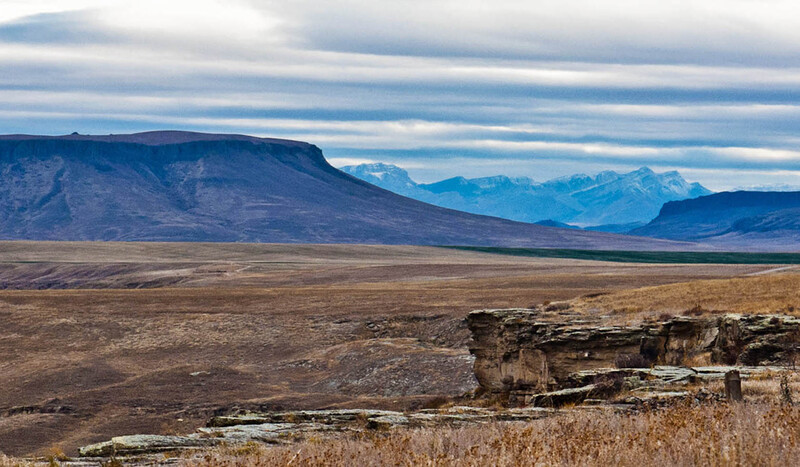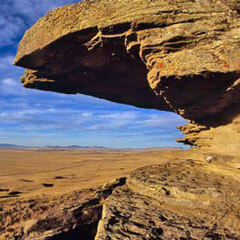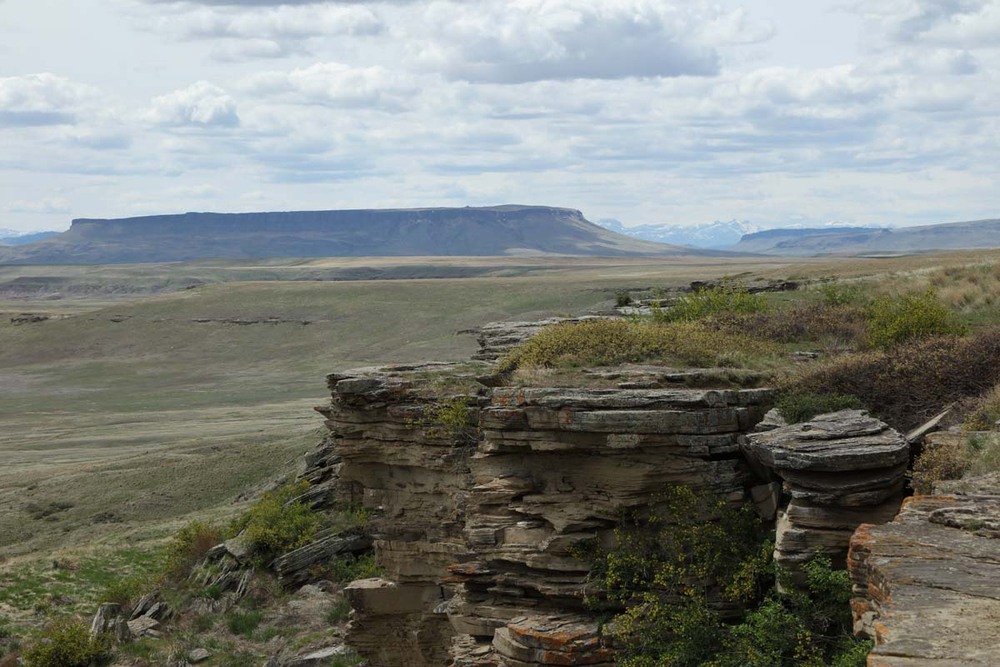
Communal bison hunting required tremendous sophistication and a deep understanding of bison behavior and Northern Plains topography. Although sites varied considerably, the ideal location for a large-scale hunt had water and good grazing nearby to attract a bison herd. It also had places for hunters to hide as they lured the bison, over a period of days, to a landform featuring a steep bank or cliff. There, hunters frightened the shaggy beasts into stampeding over the edge while fellow band members waited below to kill the animals wounded in the fall. Remnants of this collective enterprise can be found at First Peoples Buffalo Jump, one of the longest continuously used communal hunting sites in North America. More than fourteen hundred rock cairns still stand here, forming forty-seven stone alignments, some of which make up mile-long drive lines. Other constructions include low rock walls, possibly designed to trip bison to increase the impact of their fall. Four bone middens (beds filled with bones) reflect the tens of thousands of bison processed at the site. Tipi rings still mark the campsites, where families lived for weeks as they gathered, not just to hunt and process meat, but for reunions, weddings, and religious rituals. The site’s ceremonial significance is reflected in its pictographs, petroglyphs, and large stone circle, thought to be used for ceremonies. In use from approximately 4,000 BC until circa 1,700 AD, First Peoples remains important to present-day Native tribes, who continue to “visit the property for regular sacred and celebratory ceremonies.” Its national significance has also been recognized by the United States government, which designated First Peoples as a National Historic Landmark in 2015.
Images



